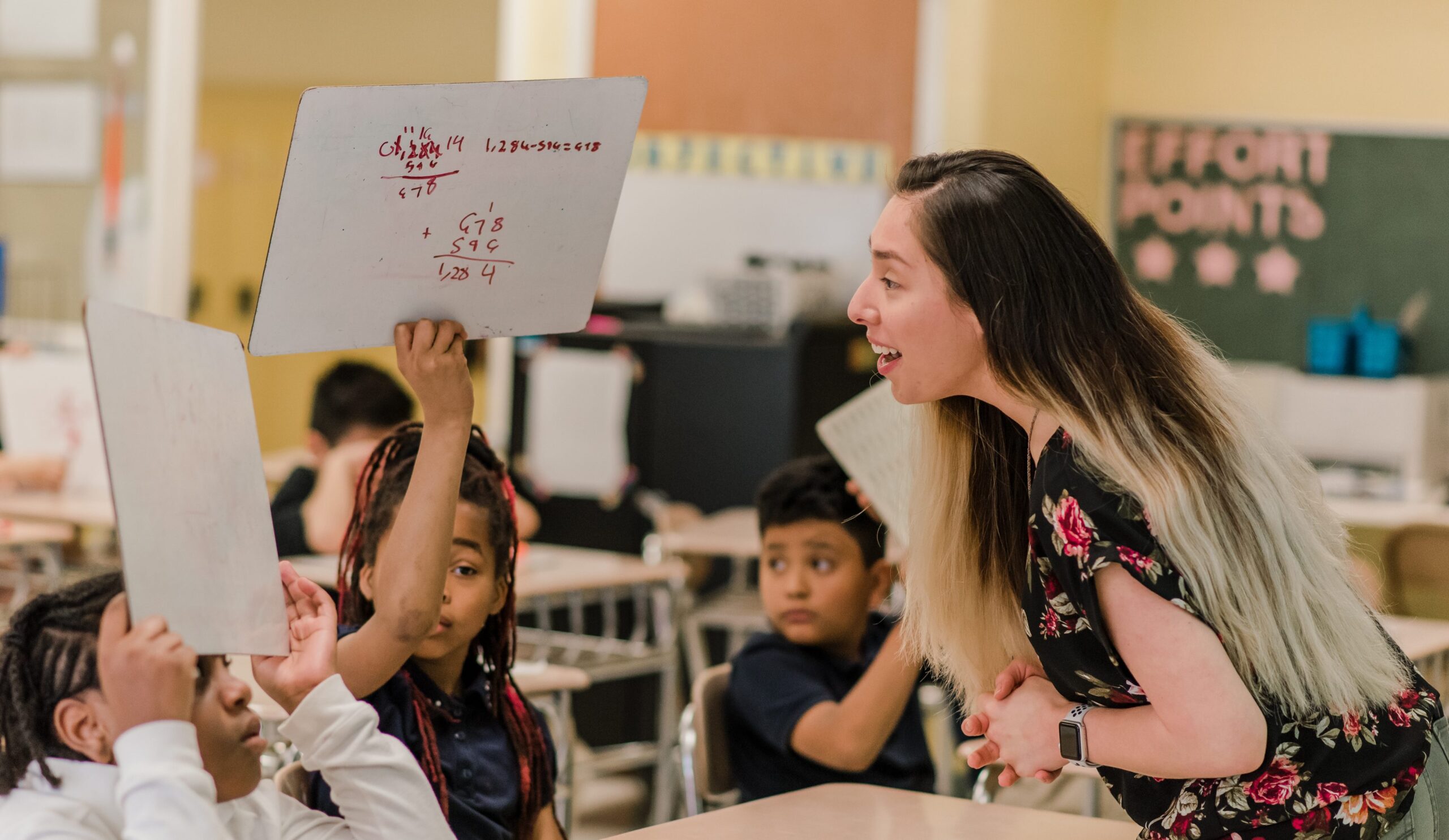Newly released Maryland PARCC test results reveal that Baltimore City schools partnering with UMBC have seen dramatic growth in student math performance. The Baltimore Sun has called this trend one of the “bright spots” at a challenging moment, when many schools across the state are struggling to move the needle on student learning in math.
Math test scores for the six city schools involved with the UMBC Math Project grew by an average of five percentage points this year. Included are Liberty Elementary School, Mary Rodman Elementary School, James McHenry Elementary/Middle School, Federal Hill Preparatory Elementary School, Lakeland Elementary/Middle School, and Maree G. Farring Elementary/Middle School.
In comparison with this proficiency increase, Baltimore’s overall PARCC math scores remained flat and the state of Maryland experienced a drop of 1.1 percent. This year’s growth also builds on last year’s average increase of 6.9 percentage points at UMBC Math Project partner schools.
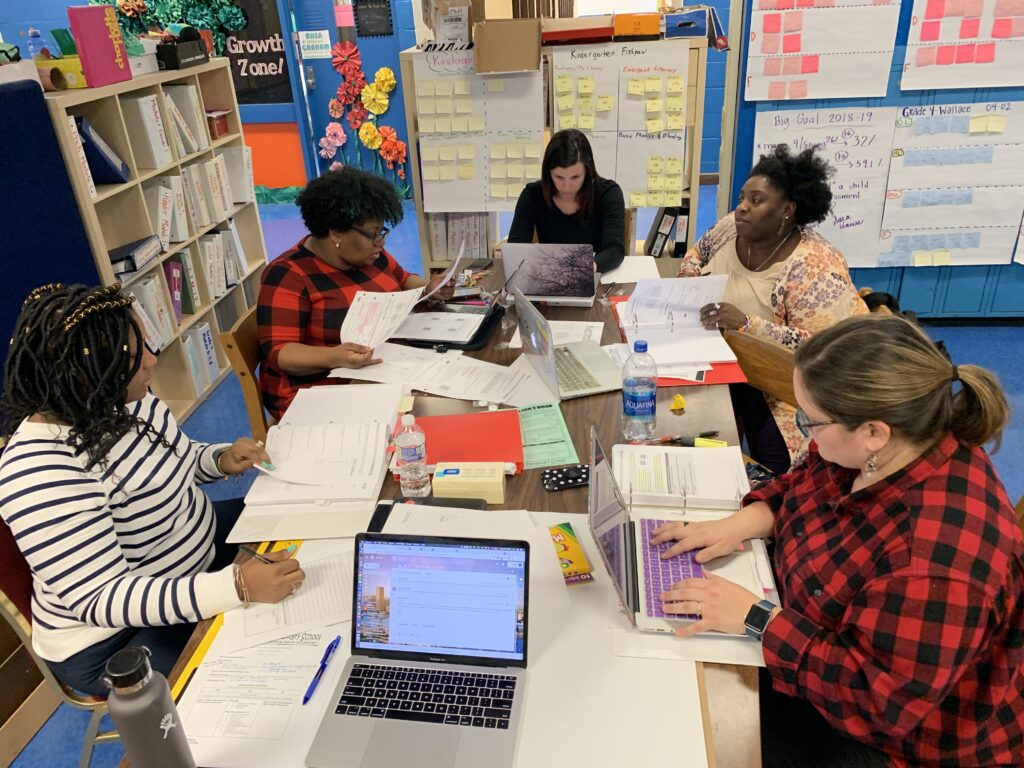
UMBC Math Project
To achieve this growth, the UMBC Math Project supports teachers and school leaders in elementary and middle grades through ongoing coaching and professional development. The project has involved 60 educators and supported over 2,000 city school students.
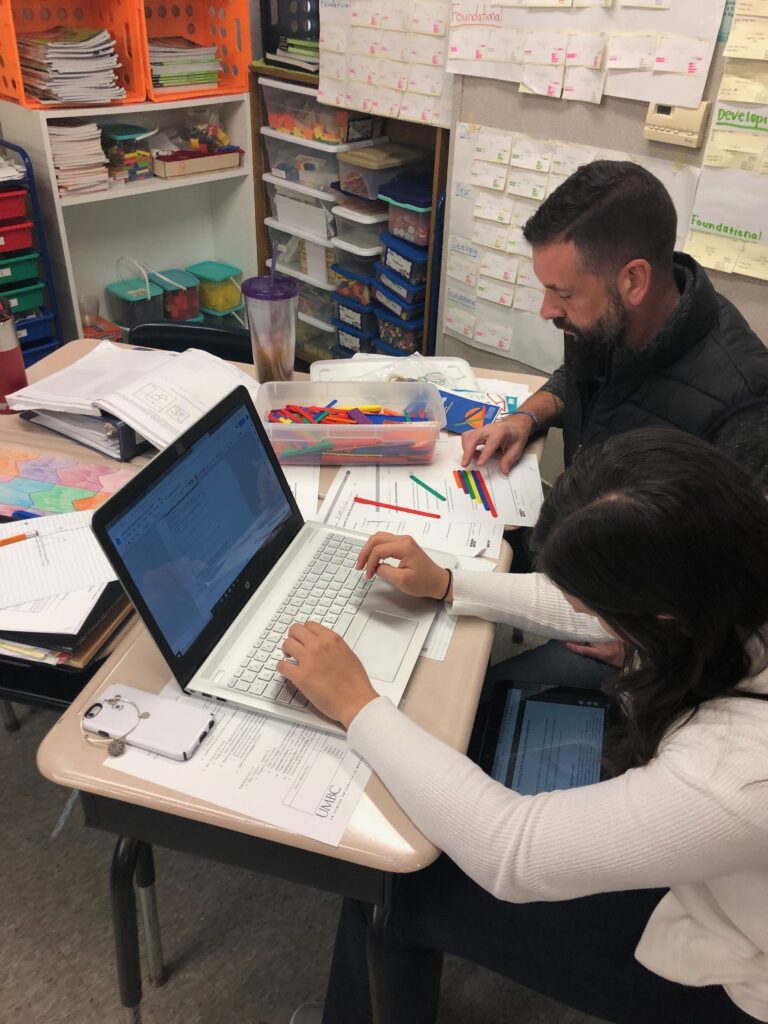
Professional development sessions build teachers’ math content knowledge. They also provide teachers with data analysis techniques to understand where students face challenges, and instructional practices to improve student learning outcomes.
UMBC’s current approach builds on an early partnership with Lakeland Elementary/Middle School supported by the Sherman Family Foundation, with professional development provided by Christopher Rakes of UMBC’s education department.
Today, UMBC facilitators connect with each school in the project in slightly different ways, based on school structures and needs. For some, support is very hands on. For others, consultation focuses on work with school leaders, who then implement professional development strategies with their teachers.
Intentional focus on early grades
Joshua Michael ‘10, political science, and a doctoral student studying education policy, serves as assistant director of the Sherman STEM Teacher Scholars Program at UMBC. He meets with educators in each school every two weeks for collaborative planning and professional development sessions.
“Our focus on elementary and middle grades mathematics is intentional,” Michael says. “Over 50 percent of students are performing notably below grade-level by third grade. We must adapt what and how we teach to meet students where they are and set a plan to meet rigorous standards. We know that algebra readiness is a key link to success in high school and beyond.”
Michael, a graduate of the UMBC Sondheim Public Service Scholars Program, taught in city schools earlier in his career, and he enjoys helping educators develop a renewed sense that they can have a measurable impact on student learning.
“Teachers want to do this work, and will go above and beyond when they are empowered as professionals,” Michael says. “Classroom teachers have great insight into what works for students, and when we honor that knowledge and support teachers in developing more tools to do their work, we see students grow.”
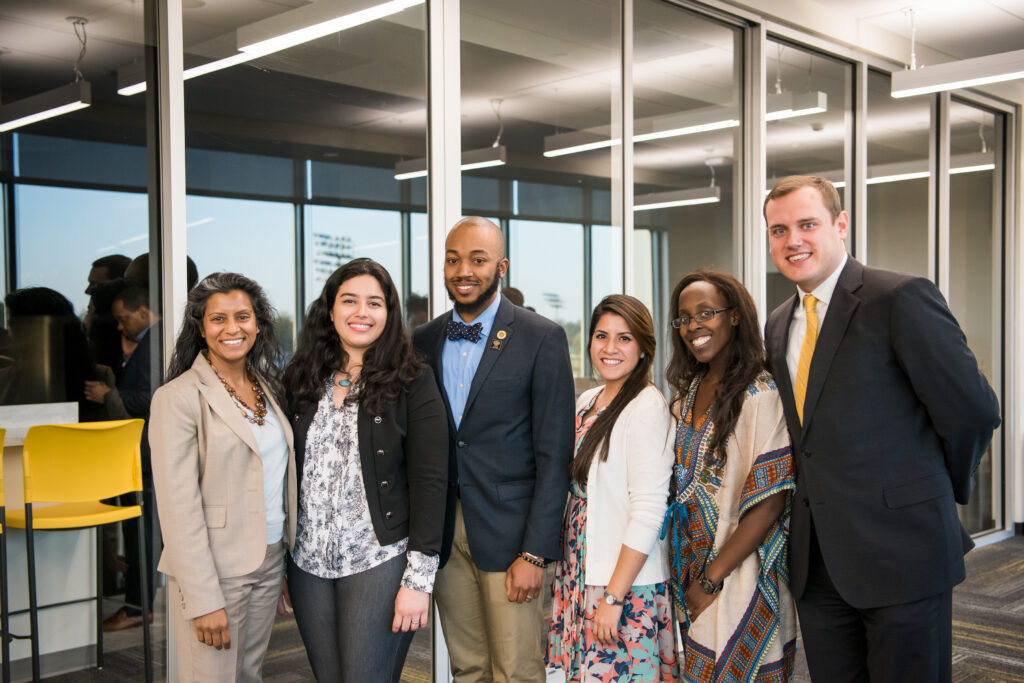
Data-informed approach sees results
Michael has found that schools particularly value learning how to use data analysis as a tool to determine what’s working in class, and what they should adjust. As UMBC President Freeman Hrabowski has explained, “We’re bringing more specificity to the work.” And it’s paying off.
From 2016 to 2019, Liberty Elementary School saw an increase from 21.7 to 26 percent in math proficiency. Sara Krauss, assistant principal and math lead at Liberty shares, “Working with the UMBC Math Project has broadened our view on how to attack data. Each teacher now has the tools to make predictions about student growth based on their current math levels using several sources.”
“We use this information to monitor students’ growth, have conversations with students about where they are, and set learning goals,” Krauss explains. “Including students in conversations about their learning is essential.”
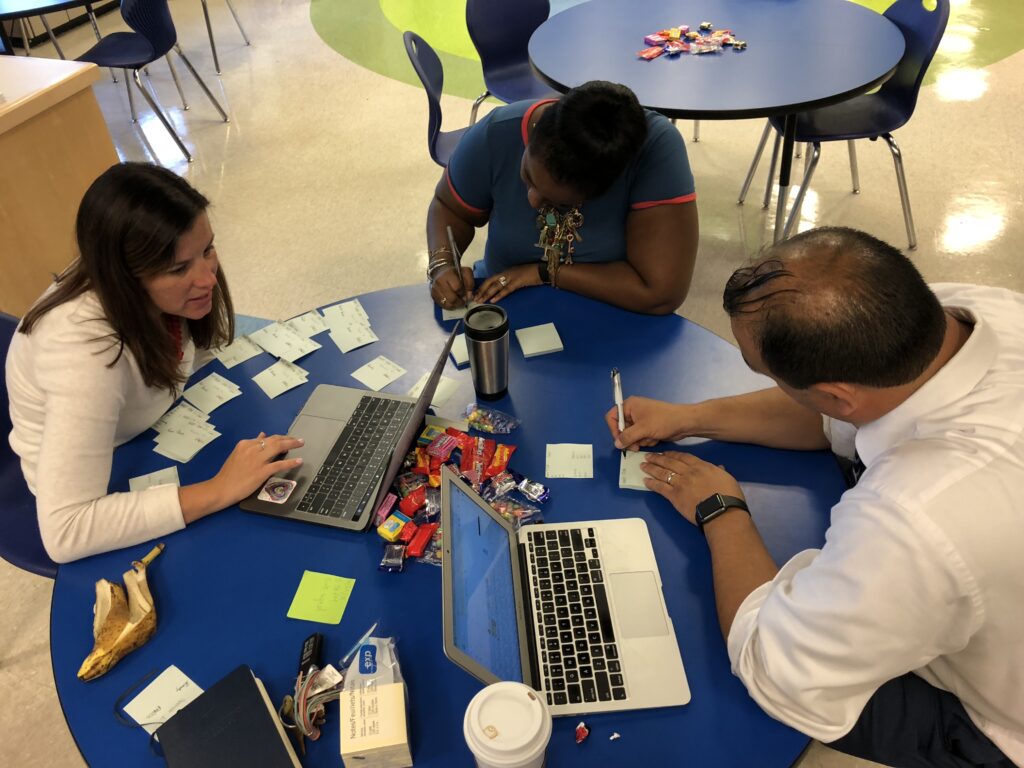
Over the same four years, Lakeland Elementary/Middle School saw an increase in math proficiency from 16.7 to 31.8 percent.
From 2017 to 2019, Mary E. Rodman Elementary School has grown from 2.2 to 22.8 proficient in math. “The partnership that our math team formed with UMBC has been transformational,” says third grade teacher Emily Campbell. “The triangulation of data from multiple sources has allowed us to group students in ways which meet their individual needs. It’s taken differentiation to a new level.”
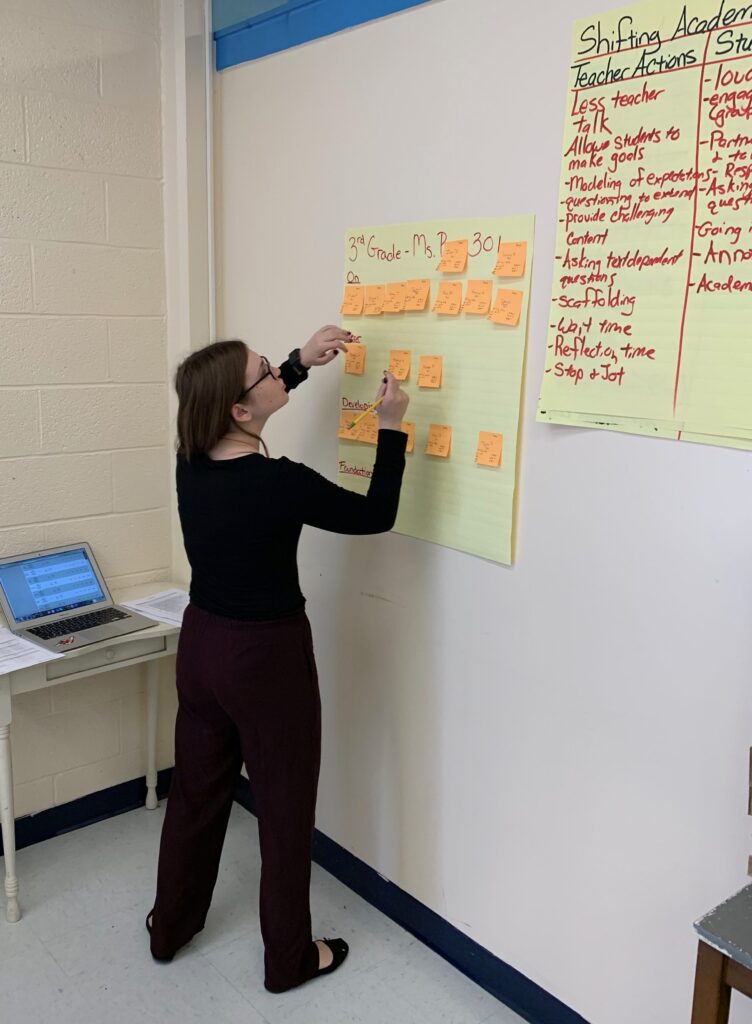
Within that same time frame, Federal Hill Preparatory Academy has also seen incredibly strong results, growing from 17.9 to 43.3 percent. Sara Long, principal of Federal Hill Prep, says, “The partnership provided me with an opportunity to grow as an instructional leader. The planning, collaboration, data analysis, and instructional strategies that we developed allowed our staff to implement differentiated high quality instruction that was individually tailored to meet the needs of all of our students.”
James McHenry Elementary/Middle School has also seen steady growth. Of the partner schools, James McHenry started with the most challenging test results, with just 1.7 percent of students reaching proficiency in math in 2017. Just two years later, that has increased nearly three-fold, to 4.9 percent.
Maree G. Farring Elementary/Middle School is the newest UMBC Math Project partner. Over the past year, the school grew its math test scores from 9.2 to 13.1 percent proficient.
Access for all students
Although the current trends are significant, UMBC Math Project leaders and participants also recognize the importance of expanding partnerships like this to more schools across the city and the state. And the partners are beginning to explore the possibility of summer programs to accelerate student learning.
UMBC’s Susan Sonnenschein, professor of psychology, and a team of graduate students are currently evaluating the UMBC Math Project. This is an essential step to ensure future investments are driven by detailed knowledge about how the program works and how it can have the most impact.
“We approach this work with the mindset that these are our students,” says Michael, “and we design learning experiences that we would expect for our own children.”
“Student engagement has sky-rocketed as more and more students are gaining confidence through accessible instruction and high expectations,” he notes. “This is the education our children deserve—an experience where they can build on their strengths and grow to their fullest potential.”
Featured photo: Sherman STEM Teacher Scholar Vanessa Gonzalez ’19, American studies, works with Lakeland Elementary/Middle School students. Photo by Marlayna Demond ’11 for UMBC. Photos not by Demond are by Josh Michael for UMBC.
Tags: Alumni, CAHSS, Education, Psychology, PublicPolicy, ShermanScholars, SondheimScholars

